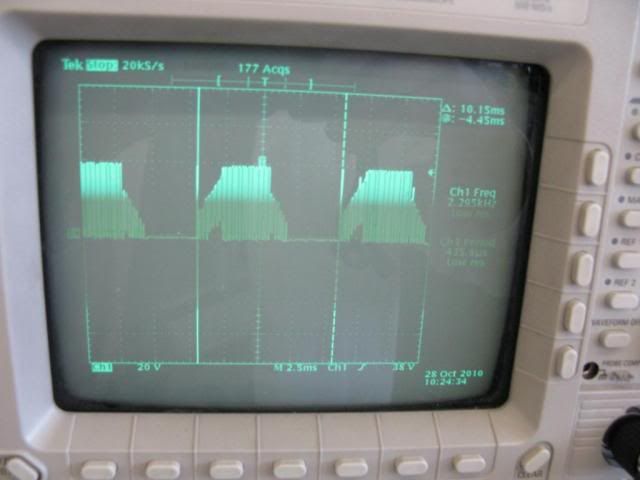The controller / throttle/ motor relationship is voltage controlled not current. The throttle controls the PWM period of the controller which changes the voltage the motor sees and thus its RPM, the current drawn during the PWM period is dependent on motor load and will rise under load up to the controller limit. Maximum load is around 50% of the maximum RPM under no load. The PWM period can remain the same but the motor phase current draw can vary at different loads like when climbing a hill, in this respect the controller is a buck converter trading volts for amps. Torque is related to current but taking it in isolation is rather meaningless, heres a post Tillson made a long time back and explains the relationship better than I can:
A torque figure in isolation is pretty meaningless in terms of giving an indication of power. Power (P) is the product of torque (T) multiplied by the rate at which the the motor or wheel rotates (W). The rate of rotation for this calculation is measured in radians per second and is known as the angular velocity. There are 2 x Pi radians in one revolution, so a motor shaft or wheel rotating at 1 revolution per second will have an angular velocity of 2 x Pi radians per second (Pi = 3.142) so 6.284 radians per second (W)
Taking Power (P) = torque (T) x angular velocity (W)
Therefore, Torque (T)= P/W . If (P), the motor power is fixed at say 250 Watts, by altering W, the output torque is also varied. If W is lowered (reduction gearing, slower bike) torque (T) will increase (better hill climber) And if W is increased by high gearing (fast bike) torque (T) will reduce (poor hill climbing). This is why crank drive bikes are so versatile, you can vary the W part of the equation with the bikes gears.
So, returning to your original point, torque in isolation is not any indication of the power which a motor delivers for the reasons given above.
A torque figure in isolation is pretty meaningless in terms of giving an indication of power. Power (P) is the product of torque (T) multiplied by the rate at which the the motor or wheel rotates (W). The rate of rotation for this calculation is measured in radians per second and is known as the angular velocity. There are 2 x Pi radians in one revolution, so a motor shaft or wheel rotating at 1 revolution per second will have an angular velocity of 2 x Pi radians per second (Pi = 3.142) so 6.284 radians per second (W)
Taking Power (P) = torque (T) x angular velocity (W)
Therefore, Torque (T)= P/W . If (P), the motor power is fixed at say 250 Watts, by altering W, the output torque is also varied. If W is lowered (reduction gearing, slower bike) torque (T) will increase (better hill climber) And if W is increased by high gearing (fast bike) torque (T) will reduce (poor hill climbing). This is why crank drive bikes are so versatile, you can vary the W part of the equation with the bikes gears.
So, returning to your original point, torque in isolation is not any indication of the power which a motor delivers for the reasons given above.








